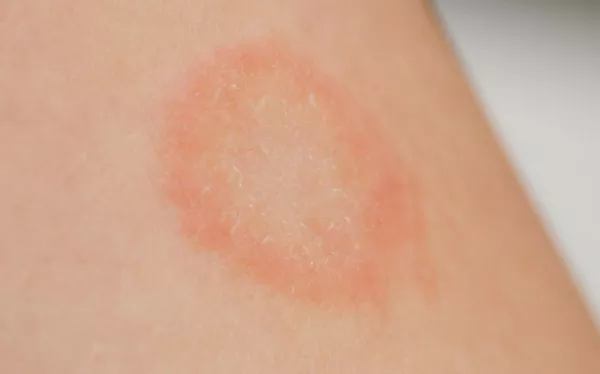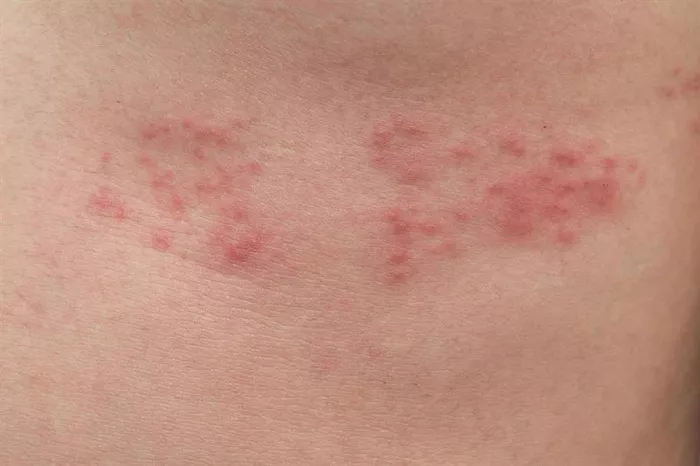Ringworm, a fungal infection caused by dermatophytes, can be uncomfortable and irritating. It usually affects the skin, hair, or nails, and causes symptoms like redness, scaling, and itching. The condition is highly contagious, spreading through direct contact with an infected person or contaminated surfaces.
A common question people ask is whether ringworm itches more when healing. To understand this, it’s essential to first understand how ringworm affects the skin and how the healing process works. This article will explore the itchiness associated with ringworm and how it changes during healing.
What is Ringworm?
Ringworm, also known as tinea, is a fungal infection that targets the outer layer of the skin. The infection gets its name because of the characteristic ring-shaped rash it creates. The rash typically appears with a raised, red border and a clearer center. Though ringworm can affect any part of the body, the most common types are:
- Tinea corporis (body)
- Tinea pedis (athlete’s foot)
- Tinea cruris (jock itch)
- Tinea capitis (scalp)
- Tinea unguium (nail)
The fungi responsible for ringworm thrive in warm, moist environments, making areas like public showers, locker rooms, and swimming pools common breeding grounds.
How Does Ringworm Cause Itching?
Itching is one of the hallmark symptoms of ringworm. The infection irritates the skin as the fungi grow and spread. The body responds by increasing blood flow to the area, leading to inflammation. Inflammation results in redness, swelling, and discomfort, including itching.
The itchiness can also be due to the body’s immune response to the infection. White blood cells fight off the fungi, and this immune response can cause skin irritation and the release of histamine, a substance that triggers itching. While the itching can be intense during the infection, it may change as the infection begins to heal.
The Healing Process of Ringworm
The healing process of ringworm involves several stages. Once the infection is diagnosed and treated, the fungi begin to die off, and the skin begins to recover. The main treatment for ringworm is antifungal medication, which can be topical or oral, depending on the severity of the infection.
Here’s a typical timeline of the healing process:
Initial Infection: During the early stages of infection, the fungi spread, causing redness, irritation, and scaling. The skin may feel tight, warm, or sensitive.
Treatment Begins: Once antifungal treatment starts, the infection starts to slow down. You might notice a reduction in the intensity of the itching, and the rash may begin to shrink. The healing process could take anywhere from a few days to a few weeks, depending on the severity of the infection.
Mid-Healing Stage: As the infection heals, the skin begins to return to its normal color, and the rash starts to fade. At this point, the itchiness may decrease, but it could still occur intermittently as the skin continues to recover.
Final Stages: In the final stages of healing, the skin starts to regenerate. The flaky patches start to heal, and the skin may feel tender or dry. Itching may resurface briefly but should gradually disappear as the infection clears up.
Does Ringworm Itch More When Healing?
It’s common for people to experience some level of itching during the healing process of ringworm. However, the intensity of the itching might change. The itching can feel worse during the healing phase for several reasons.
Why It May Itch More During Healing:
Skin Regeneration: As the skin heals, new skin cells are produced to replace the damaged ones. This regeneration process can cause the skin to feel itchy. The skin may feel tight or dry as it heals, which can lead to increased itching.
Dryness and Flakiness: When ringworm starts to heal, the affected skin often becomes dry and flaky. This can cause the skin to itch as the outer layer sheds, revealing fresh skin underneath. The dryness can intensify the feeling of itchiness, even though the infection is on the mend.
Healing Inflammation: Even after the fungi have been eradicated, the immune response to the infection may continue for some time. The inflammation can still cause discomfort and itching. The body’s healing process may continue to release histamine, a chemical that stimulates itching.
Antifungal Treatment Side Effects: Sometimes, the antifungal medication used to treat ringworm can cause skin irritation. This can make the itching feel worse during the healing phase. It is essential to follow the doctor’s instructions when using these treatments to avoid any additional skin reactions.
Rebound Itching: After the infection starts to clear up, some people experience a temporary increase in itching. This is a phenomenon known as “rebound itching,” where the skin reacts to the changes as the infection recedes. While it can be uncomfortable, it is usually a sign that the skin is healing.
How to Manage Itching During the Healing Process
If you’re dealing with increased itching as ringworm heals, there are a few ways to manage the discomfort.
Moisturize the Skin: Keeping the skin hydrated can help reduce dryness and the itching associated with it. Use a gentle, fragrance-free moisturizer to soothe the skin without irritating it further.
Avoid Scratching: It can be tempting to scratch the itchy area, but this can worsen the condition and cause secondary skin infections. Try to resist the urge and apply a cold compress to the area to reduce the itching.
Use Anti-Itch Creams: Over-the-counter hydrocortisone creams can help reduce inflammation and alleviate itching. Make sure to check with your doctor before using any product on the affected area.
Wear Loose, Breathable Clothing: Tight clothing can irritate the healing skin and make itching worse. Wear loose, cotton clothing to allow the skin to breathe and to minimize irritation.
Keep the Area Clean and Dry: Fungi thrive in warm, moist environments, so it’s essential to keep the affected area clean and dry during the healing process. Gently wash the area with mild soap and water, and pat it dry with a clean towel.
Follow Your Doctor’s Instructions: If your doctor has prescribed antifungal medication, make sure to complete the full course of treatment. Stopping the medication early can cause the infection to return, potentially causing more severe symptoms, including increased itching.
When to Seek Medical Advice
While itching during the healing process is generally normal, you should seek medical advice if:
- The itching becomes unbearable or significantly worsens.
- The rash spreads or shows signs of infection, such as increased redness, swelling, or pus.
- The antifungal medication doesn’t seem to be working, and the symptoms persist.
- You experience any unusual side effects from the treatment, like severe irritation or allergic reactions.
Conclusion
In summary, it is not uncommon for ringworm to itch more during the healing process. As the skin regenerates, dryness, inflammation, and the body’s immune response can cause temporary increases in itching. While this can be uncomfortable, it is usually a sign that the infection is clearing up. By following proper care and treatment, you can help manage the itching and promote healing. If you experience any unusual symptoms or worsening of the condition, it’s always best to consult a healthcare professional to ensure proper treatment.
Related topics:


























